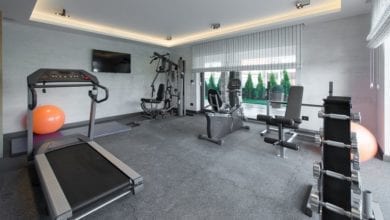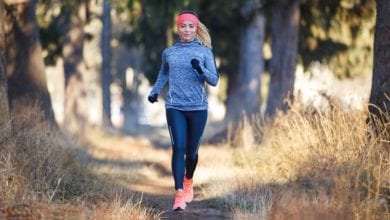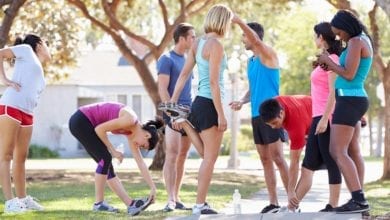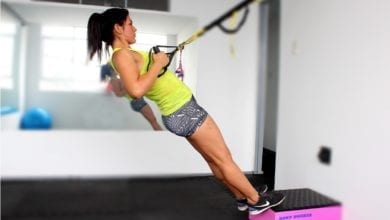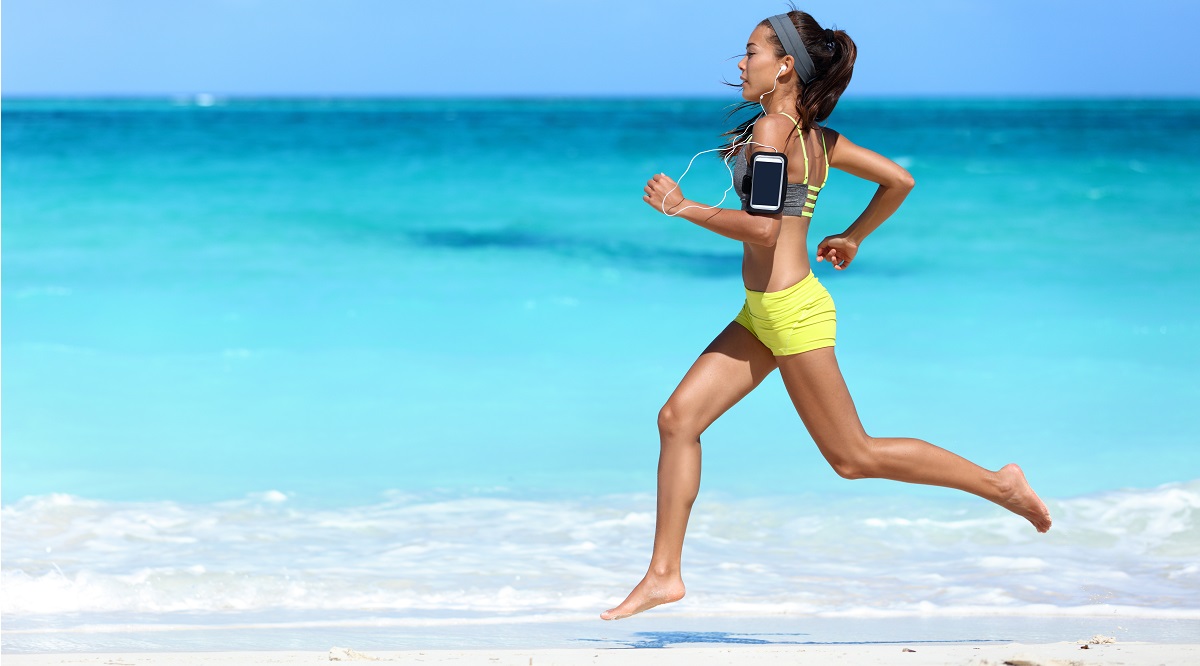
Our Editors independently research, test, and rate what we feel are the best products. We use affiliate links and may receive a small commission on purchases.
Imagine it now: a caveman running through the wild forests, a spear in hand, trying to chase down a wooly mammoth. What does he have on his feet? Is that a pair of Nikes?
You have to admit that that image does look a little bit ridiculous, and it is because for millions of years, humans ran barefoot and made out just fine! There are tons of benefits to running barefoot, so if you’re ready to start out the right way, we’re here to help!
Benefits
First, let’s take a look at some of the benefits you can experience by running barefoot. The most notable is that it actually strengthens the foot muscles, particularly in the arch. This is great for those who have a family history of collapsed arches.
Not only that, but it has been suggested that running barefoot costs less energy as you’re using the natural springs in your feet and lower leg muscles to store and use energy.
Not only that, but you aren’t going to waste energy by carrying and moving around shoes on your feet. It’s been shown that running barefoot actually saves about 5% of your energy compared to running with shoes on.
Finally, barefoot running feels awesome! Most people don’t take any time getting used to it due to how great it feels underfoot.
1. Keep Mileage Low
You never want to dive right into anything when it has to do with running. It’s ideal to slowly and steadily make a transition so you don’t injure yourself. One of the most common occurrences when people move into barefoot running too fast is top of foot pain or “TOFP”. This usually is caused by your feet being unable to support so much stress.
That’s not to say your feet aren’t designed for it, but rather they’re not accustomed to it due to wearing shoes your entire life. Some people make a transition by first getting used to running in barefoot/minimalist shoes. After a couple of months (or more, if you choose) you can begin working your way into true barefoot running.
To start off, walk barefoot around your house for the entire day and evaluate how you’re feeling the next. If you feel fine, try out a gentle jog around the block a few times and see how you’re feeling after a couple days. It’s normal to have sore calves and arches though it should never be outright painful.
Make sure you’re increasing your distance by a maximum of 10% each week. Of course, if you’re not feeling sore at all, you could probably get away with more. Just remember to listen to your body. If you’re really sore, let your body rest. If you are in pain, that isn’t normal and it’s best to go to your doctor.
2. Begin on a Solid Surface
There are many people out there who will tell you to start out on the grass, but in my experience it’s not the best idea. As you can imagine, grass isn’t the most even of surfaces out there, which can place you at an increased risk of rolling your ankle. Not only that, but it makes it more difficult to see glass, sharp rocks, and other potentially harmful objects.
Alternatively, try out hard packed sand or even concrete! I love hard sand personally, and it can help you evaluate your footprints and see how you’re pushing off. The footprints should all be evenly deep, from the toes to the heel.
3. Minimize Noise
While hard sand has the benefit of helping you gauge your form with footprints, running on concrete or asphalt is beneficial in that you can judge your running based on sound produced. If you hear a “thud” while running, realize that is being produced by heavy impact. That impact is stress on your body – particularly the joints in your lower body.
The good news is that you can fix this! Each time you go out running, make a conscious effort to make each one more quiet. You can do this by landing softer. It helps by acting you’re a secret spy or ninja and making sure no one hears you coming (not from firsthand experience, of course!).
4. Focus on You
After all, you’re not running barefoot to improve anyone else’s health, are you? While you may, at first, feel a bit insecure or like everyone is looking at you, rest assured they’re not. In fact, you’ll probably get some positive comments or people wanting to know a bit more about what you’re doing!
If you do get negative comments, simply ignore it. They must not have anything better going on that they feel they have to put down others. As long as you are having a good time and feel it’s made a positive impact on your life then all that doesn’t matter.
5. Make Sure to Stretch
Stretching is crucial for running, no matter if you’re wearing shoes or not. Pay special attention on your calves, hamstrings, and quads as you’re going to experience a lot of soreness here. Getting massages on your calves and arches often will help break apart muscle knots which will help in keeping you agile, and injuries and soreness to a minimum.
Massages and stretching can actually help increase mobility and make your muscles stronger as well! Of course, if you ever feel actual pain in your arches, make sure you’re not landing with a stiff foot and that you’re letting your heel drop gently.
Summary
Now that you’ve read through our guide for getting started running barefoot, do you have a better idea of how to go about it? We hope it’s given you a deeper understanding of what to do and what to avoid. It’s normal to be confused or even feel like it’s unnatural at first.
After all, most of us have spent our entire lives running with shoes on! We hope that this has been of some help! Thanks for tuning in, and we’ll see you again soon. Remember to have fun, and build up steadily!

